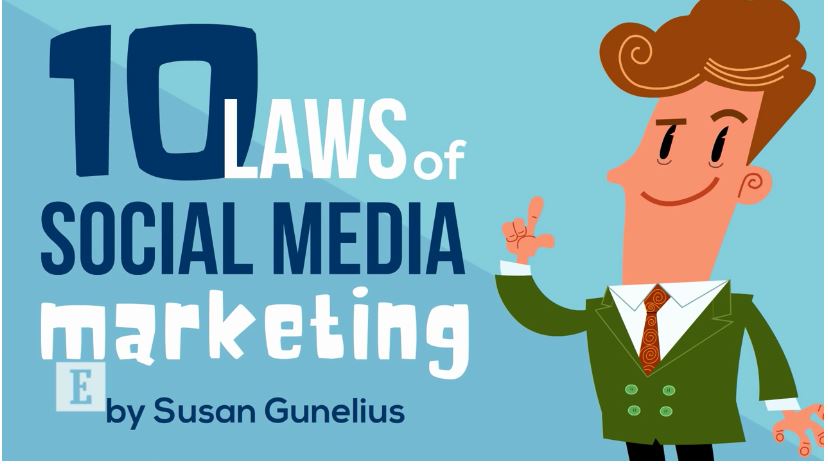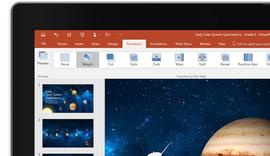By Nate Teplow, Sr. Product Marketing Manager, Continuum
Business challenges are inevitable, but figuring out how to effectively identify and overcome these obstacles means the difference between scaling profitably and stagnating.
If I were to ask you to name your biggest pain point, you'd probably say “cash flow,” or “lack of time,” or “not enough  bandwidth,” but dig deeper. Is the primary issue that you can't simultaneously generate new business while supporting your existing client base? Does your clunky technology stack eat up valuable staff time and talent? Perhaps you have a talent problem and struggle to hire or retain qualified personnel.
bandwidth,” but dig deeper. Is the primary issue that you can't simultaneously generate new business while supporting your existing client base? Does your clunky technology stack eat up valuable staff time and talent? Perhaps you have a talent problem and struggle to hire or retain qualified personnel.
There's no shortage of challenges, but to adequately address each you have to tackle the root cause. To help you paint a clearer picture, we’ve outlined 14 common problems that MSPs face daily. Read on to see if any sound familiar and check out a new tool we created to help you overcome each.
1. Too Many Tickets
As an MSP, you’re in the business of managing tickets. But ticket overload can be a huge drain on productivity and profitability. Finding ways to reduce ticket volume will help your team stay more productive, spend more time with your clients and focus on driving revenue for your business. Make sure the solutions and processes that you’ve implemented are helping to reduce ticket volume, not adding to it.
2. Building in RMM Alerting Conditions
RMM solutions are ideal because they allow you to monitor just about anything when it comes to your client machines. But typically you need to tell the solution what to look for before you start generating meaningful data. This can lead to dozens, if not hundreds, of hours that your team needs to spend setting up and configuring your solution.
3. Maintaining Your RMM Solution
The work is not done after setting up your RMM solution, however. You constantly need to update your alerts and configurations to make sure you’re monitoring the right thresholds and events, which can dramatically impact your business’ profitability. Using solutions that require minimal maintenance and updating will reduce your total cost of ownership and add money to your bottom line.
4. Catching Issues Proactively
Once you know what to look for, RMM solutions deliver. The problem is that you usually have to experience an issue first-hand before you know how to configure your alerting conditions. This can lead to reactive service, rather than proactive service, and oftentimes strains your client relationships.
5. Profitable 24x7 Monitoring
Your clients expect you to monitor their systems 24x7, but this can be very hard to do profitably. Staffing technicians around the clock can be an enormous cost, but not having people available to fix issues at any hour will reduce your ability to provide proactive services. This leaves a very small window for you to operate proactively and profitably.
6. Finding New Skillsets
If you want to compete for new projects and new clients, you need to have the right team and expertise in place to support them. But we all know how difficult it is to find technical talent. Make sure you have access to resources with different areas of expertise so that you have the opportunity to compete for new projects and new clients.
7. Technician Churn
If you’re like most MSPs, at some point you’ve probably lost a technician, scrambled to find a replacement and struggled to provide quality service. When faced with technician churn, the time spent searching for a replacement takes away from time you could be spending on client-facing activities. Again, having access to technical resources will reduce your risk of lost profits if a technician does leave.
8. Too Many False Positive Alerts
While RMM solutions are great at notifying you of issues, they can also be great at notifying you of non-issues! RMM solutions typically generate lots of false positives, which means your team has to investigate more issues before determining there isn’t a problem. Reducing false positives will make sure your team is only notified when action needs to be taken, which can dramatically reduce time to resolution and increase the amount of tickets your team is able to manage.
9. Lead Generation
Buying lists and relying on referrals – two common indicators that an MSP is having a hard time generating their own leads. It’s hard to run a business and service your clients, and even harder to find time for marketing as well. Take control of your growth, and make sure your partners provide knowledge, support and materials that help you market and sell your services.
10. Ticket Categorization
Not all tickets are created equal. Some issues need to be resolved immediately, while others require certain expertise or can wait until the weekend. Effectively categorizing and routing your tickets will help your team operate more efficiently and fix issues faster.
11. Level 1 and 2 Client Support
Supporting your clients is part of the MSP job description. But basic support tasks, like password resets or connecting to printers, can be incredibly disruptive to your team’s productivity. Offloading Level 1 and 2 support can free up your team to work on more complex, revenue-driving projects and reduce technician fatigue.
12. Patch Testing and Management
Clients have visibility into patch management, so it’s especially important that you adhere to best practices and monitor what gets deployed. The problem is that it can be incredibly time-intensive to thoroughly test patches to ensure minimal impact on your clients.
13. Maintaining Margins
Managed services can be a volatile business. One minute everything is under control, the next you have four clients calling you at the same time because their systems are down. This makes it incredibly difficult to maintain consistent margins and profitability. Outsourcing some of this support enables you to fix more of your service costs and stabilize your margins. \
14. Calculating Total Cost of Ownership
The cost of your solution(s) is a lot more than the invoice you receive from your vendors. In a services business, you need to understand all of the factors that contribute to the cost of ownership, in particular, the amount of time your team spends using and managing the solution. Make sure you’re looking beyond the sticker price to calculate your service costs.
So Now What…
With the New Year, review your business and identify inefficiencies that you can improve going forward. If any of these common challenges sound familiar, you should take a look at your solution(s), your processes and your strategies to make sure you are maximizing business efficiency and profitability.
Is it time for a change? Our new tool lets you select your worst pain points and tells you what to look for in an RMM solution. Check out the RMM Wish List Generator here!
Nate Teplow is a Sr. Product Marketing Manager at Continuum, currently managing the company's RMM marketing initiatives. Nate's experience spans inbound marketing, content strategy, marketing communications and B2B lead generation. A proud Miami Hurricane alumni, Nate enjoys staying active, traveling to new places and performing A/B tests.
 The man of steel?
The man of steel? 




 party information stolen, or the record of clients compromised. Whether you are an individual entrepreneur or a small business owner, the last achilleas heel you want attributed to your operations, is your inability to keep data safe and secured. You do not also want to lose your hard-earned client data because windows will not start or because your hard disk crashed. Here are 5 ways to effectively combat data theft and data loss;
party information stolen, or the record of clients compromised. Whether you are an individual entrepreneur or a small business owner, the last achilleas heel you want attributed to your operations, is your inability to keep data safe and secured. You do not also want to lose your hard-earned client data because windows will not start or because your hard disk crashed. Here are 5 ways to effectively combat data theft and data loss;


 The good news is, the 10 points below might just put you (yes you, the small business owner) on cloud nine; call it the “five-finger discount” to achieving marketing and promotional goals with little or no budget!
The good news is, the 10 points below might just put you (yes you, the small business owner) on cloud nine; call it the “five-finger discount” to achieving marketing and promotional goals with little or no budget! either failing to stay with the times or improperly applying new technology, a business can be set back far behind the competition. However, there are consultants that can help you avoid these common tech mistakes that most small businesses make
either failing to stay with the times or improperly applying new technology, a business can be set back far behind the competition. However, there are consultants that can help you avoid these common tech mistakes that most small businesses make
 Things. This includes connecting your car with internet and make it software-driven with artificial intelligence.
Things. This includes connecting your car with internet and make it software-driven with artificial intelligence. achieve your organizational goals and objectives. Thus, while a list of rules of conduct and a summary of benefits are important information, you should evaluate your handbook on its ability to help your organization meet its objectives.
achieve your organizational goals and objectives. Thus, while a list of rules of conduct and a summary of benefits are important information, you should evaluate your handbook on its ability to help your organization meet its objectives. and pollution of air, water, and soil have created conditions for unprecedented environmental catastrophe and have already caused irreversible damage to the biosphere. While the future might promise a vast acceleration of technological innovation, the scale and impact of environmental degradation may reflect this vast acceleration as well.
and pollution of air, water, and soil have created conditions for unprecedented environmental catastrophe and have already caused irreversible damage to the biosphere. While the future might promise a vast acceleration of technological innovation, the scale and impact of environmental degradation may reflect this vast acceleration as well. dealing with viruses and malware, but to clean is equally effective and comes with certain advantages. For Small and Medium-Size Businesses (SMB) or Managed Service Providers (MSP) who are into the business of troubleshooting computers for a fee, it is very important to weigh the convenience each of the two methods bring to you and your clients.
dealing with viruses and malware, but to clean is equally effective and comes with certain advantages. For Small and Medium-Size Businesses (SMB) or Managed Service Providers (MSP) who are into the business of troubleshooting computers for a fee, it is very important to weigh the convenience each of the two methods bring to you and your clients.  typically handled by the business owner or by the general manager. Nonetheless, some best practices for accounting procedures in small offices are worth knowing. These best practices provide guidelines on keeping your financial house in order.
typically handled by the business owner or by the general manager. Nonetheless, some best practices for accounting procedures in small offices are worth knowing. These best practices provide guidelines on keeping your financial house in order. never got the chance to use the other, then it’s obvious that you don’t know much about the other.
never got the chance to use the other, then it’s obvious that you don’t know much about the other. prevention and remediation solution, today announced the acquisition of Saferbytes, a security start-up with a proven track record of building advanced technologies with anti-malware, anti-exploit, anti-rootkit, cloud AV, and sandbox capabilities. This acquisition will greatly enhance Malwarebytes’ enterprise remediation offering and threat feeds, in addition to further advancing the company’s market approach and global strategy.
prevention and remediation solution, today announced the acquisition of Saferbytes, a security start-up with a proven track record of building advanced technologies with anti-malware, anti-exploit, anti-rootkit, cloud AV, and sandbox capabilities. This acquisition will greatly enhance Malwarebytes’ enterprise remediation offering and threat feeds, in addition to further advancing the company’s market approach and global strategy. 
 A smart CEO understands the inherent value of goal setting in steering a growing business in the right direction. Unfortunately, figuring out exactly what the right direction is—and the road map to get there—isn't as much of a no-brainer.
A smart CEO understands the inherent value of goal setting in steering a growing business in the right direction. Unfortunately, figuring out exactly what the right direction is—and the road map to get there—isn't as much of a no-brainer. access … bizarre, but nothing will be more irksome than doing everything a cybercriminal
access … bizarre, but nothing will be more irksome than doing everything a cybercriminal  range of modern business applications, and empower IT to support users who work anywhere on any device while being able to manage these devices in a secure and consistent way. The other two pillars of the Cloud OS are, of course, Windows Server 2012 R2 and Microsoft System Center 2012 R2, and Microsoft Press will soon be releasing.
range of modern business applications, and empower IT to support users who work anywhere on any device while being able to manage these devices in a secure and consistent way. The other two pillars of the Cloud OS are, of course, Windows Server 2012 R2 and Microsoft System Center 2012 R2, and Microsoft Press will soon be releasing.

 open doors and our lives are filled with flexibility and diversity. However, there are many people who leave their jobs to seek an ideal environment — and it isn’t just about the money or the location.
open doors and our lives are filled with flexibility and diversity. However, there are many people who leave their jobs to seek an ideal environment — and it isn’t just about the money or the location. Virgin Records are the most famous companies of all. Branson has said, “Simplicity and good customer service will win every time’.
Virgin Records are the most famous companies of all. Branson has said, “Simplicity and good customer service will win every time’.

 Lewis Schiff
Lewis Schiff it an indispensable and unmatched tool for startups and SMBs. To paint you a realistic picture, in a
it an indispensable and unmatched tool for startups and SMBs. To paint you a realistic picture, in a  bandwidth,” but dig deeper. Is the primary issue that you can't simultaneously generate new business while supporting your existing client base? Does your clunky technology stack eat up valuable staff time and talent? Perhaps you have a talent problem and struggle to hire or retain qualified personnel.
bandwidth,” but dig deeper. Is the primary issue that you can't simultaneously generate new business while supporting your existing client base? Does your clunky technology stack eat up valuable staff time and talent? Perhaps you have a talent problem and struggle to hire or retain qualified personnel.

 pay-per model ensures that you only pay for the resources you consume.
pay-per model ensures that you only pay for the resources you consume. I first warned you about the
I first warned you about the 

 with an integrated set of marketing and e-commerce tools to help anyone create an audience for their idea or business. GoCentral ushers in a new era of smart website creation defined by a focus on results, including attracting visitors and driving sales.
with an integrated set of marketing and e-commerce tools to help anyone create an audience for their idea or business. GoCentral ushers in a new era of smart website creation defined by a focus on results, including attracting visitors and driving sales.
 an application and its runtime conditions into a solitary compartment and provides runtime independence which empowers the container to keep running crosswise over various forms of the Linux Kernel. It is also preloaded with common open source tools to enable Linux users develop machine learning applications.
an application and its runtime conditions into a solitary compartment and provides runtime independence which empowers the container to keep running crosswise over various forms of the Linux Kernel. It is also preloaded with common open source tools to enable Linux users develop machine learning applications.
 close to half of the world’s population now have access to the internet, compared to just 20% in 2007. As broadband internet becomes cheaper to connect and use, it is only fair to expect a tsunami of IoT from 2017. The concept of IoT is to connect every powered device to the internet; once it can be turned on and off, why not hook it up to the internet?
close to half of the world’s population now have access to the internet, compared to just 20% in 2007. As broadband internet becomes cheaper to connect and use, it is only fair to expect a tsunami of IoT from 2017. The concept of IoT is to connect every powered device to the internet; once it can be turned on and off, why not hook it up to the internet? the low-hanging fruit that we have already adopted. The conundrum we face is that new solutions typically require a significant commitment of time and money in order to learn how to implement, manage and sell them while generating an acceptable return on that investment as quickly as possible. As a result, inaction and procrastination hold us back when we should be proactively expanding our solution stacks.
the low-hanging fruit that we have already adopted. The conundrum we face is that new solutions typically require a significant commitment of time and money in order to learn how to implement, manage and sell them while generating an acceptable return on that investment as quickly as possible. As a result, inaction and procrastination hold us back when we should be proactively expanding our solution stacks.









 candidates for your BDR solution.
candidates for your BDR solution. longer are we solely relying on premises-based technologies to keep our day-to-day business activities going, but are, instead, deploying cloud technologies and accessing them from remote locations. While it seems that everyone is jumping on the new cloud services trend, it leaves many people wondering how it is affecting the traditional business channels, specifically its impact on distributors.
longer are we solely relying on premises-based technologies to keep our day-to-day business activities going, but are, instead, deploying cloud technologies and accessing them from remote locations. While it seems that everyone is jumping on the new cloud services trend, it leaves many people wondering how it is affecting the traditional business channels, specifically its impact on distributors. highly disrupted technology market. To date
highly disrupted technology market. To date  because of ageism but still have credibility as a start-up entrepreneur. Likewise, you can be a millennial in the new gig economy who embraces start-ups. It’s a big tent and there is room for all.
because of ageism but still have credibility as a start-up entrepreneur. Likewise, you can be a millennial in the new gig economy who embraces start-ups. It’s a big tent and there is room for all. Chocolate-covered bacon was on the afternoon snack cart.
Chocolate-covered bacon was on the afternoon snack cart. “Our pricing model of $89 per technician is both a fraction of the cost of an existing RMM player (not to mention PSA) and the fact that it is not Agent based pricing makes it totally disruptive.” As a privately-held company, Atera doesn’t release financial information but I can attest that its growth rate is significantly ahead of plan, having reviewed some internal information.
“Our pricing model of $89 per technician is both a fraction of the cost of an existing RMM player (not to mention PSA) and the fact that it is not Agent based pricing makes it totally disruptive.” As a privately-held company, Atera doesn’t release financial information but I can attest that its growth rate is significantly ahead of plan, having reviewed some internal information.

 there is truth to humor. Recently the New York Times article “
there is truth to humor. Recently the New York Times article “
 By
By  between the two has been scope.
between the two has been scope.


 Ben Austin, Sr. Product Marketing Manager, Continuum Managed Services
Ben Austin, Sr. Product Marketing Manager, Continuum Managed Services faster and more efficient. This unique technology gives
faster and more efficient. This unique technology gives 













 Karl Palachuk as we talked about yesterday, today and tomorrow. Here are some select findings (to capture the entire conversation – please replay the webinar
Karl Palachuk as we talked about yesterday, today and tomorrow. Here are some select findings (to capture the entire conversation – please replay the webinar  and business – just as usual. And because we’re not getting any younger, it’s an picnic 2013 groupexcuse to see each other again. And with our editorial themes this year of start-up and/or start over, this is your chance to network with like-minded professionals.
and business – just as usual. And because we’re not getting any younger, it’s an picnic 2013 groupexcuse to see each other again. And with our editorial themes this year of start-up and/or start over, this is your chance to network with like-minded professionals.

 self-maintainer, you can benefit from the PowerSource professional community. PowerSource Online helps our members increase sales, build industry relationships and save time and resources with our best-in-class selling and sourcing tools.
self-maintainer, you can benefit from the PowerSource professional community. PowerSource Online helps our members increase sales, build industry relationships and save time and resources with our best-in-class selling and sourcing tools.  factors, such as their product and technical support reputation; whether the company provides sales and marketing support; financial incentives for selling products and services; and having a thorough and supported distribution channel. Once you have decided to partner with a vendor the relationship is dependent on your commitment level within their partner program. Lower levels typically provide fewer incentives and discounts than higher levels. Deciding to move up to a higher partner level may mean access to more benefits and vendor support, but it also requires that you make a significantly higher monthly or yearly sales commitment.
factors, such as their product and technical support reputation; whether the company provides sales and marketing support; financial incentives for selling products and services; and having a thorough and supported distribution channel. Once you have decided to partner with a vendor the relationship is dependent on your commitment level within their partner program. Lower levels typically provide fewer incentives and discounts than higher levels. Deciding to move up to a higher partner level may mean access to more benefits and vendor support, but it also requires that you make a significantly higher monthly or yearly sales commitment.









